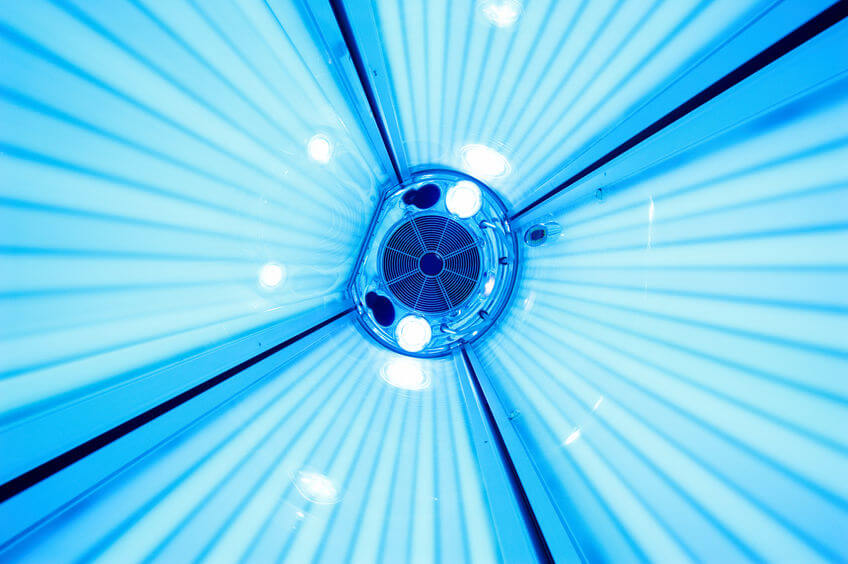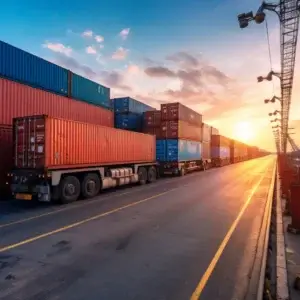Sunlight and polymers don’t go together. The UV rays that come from the sun bear nothing but evil tidings for polymers. So do the light and heat from the same sunlight. They all degrade polymers. And so polymers that are used outdoors are at constant risk of degradation through these three unavoidable factors. But there are ways of protecting these polymers from degradation factors. This is why we use light and UV stabilizers.
This guide discusses light and UV stabilizers exhaustively. And to ensure you don’t get lost somewhere before the end, we have divided this guide into four parts. Each part talks about everything from what light stabilizers are, their types, the polymers they are most compatible with, and how to ship the polymer additives.
But before we go further, let’s have you understand the effects of light and UV degradation on polymers.

How UV Degradation Affects Polymers
The effects of UV degradation on polymers range from physical to chemical. Some polymers only get affected in their looks and their coloration. Some other polymers become weak in their molecular structures and break easily. And for an unfortunate handful, they experience both.
These are the various ways light and UV degradation can affect polymers:
● Weakened mechanical properties
UV degradation leads to the loss of those mechanical properties that once enabled the polymers to do their jobs.
● Reduced molecular weight
Light degradation causes the molecular weight of the polymers to reduce. This is a consequence of the breaking of long molecular chains into shorter bits. And when this happens, the polymer becomes weaker and it’s only a matter of time before a little amount of stress breaks it.
● Loss of transparency
Transparent polymers lose their transparency on exposure to light degradation. This is because of the polymers dispersing the incident light rays instead of letting them through.
● Release of harmful by-products
The degradation of some polymers is often characterized by the release of harmful by-products. These by-products then escape into the environment and accumulate in animals and humans. The story never ends well from here.
Now that you understand some negative effects of light degradation on polymers, let’s discuss the solutions to these problems. Let’s talk about light stabilizers.
PART A
This part gives you an overview of what we’ll be discussing in other parts of this article. In this part, you’ll learn:
What Are Light Stabilizers
Light stabilizers are a group of polymer additives that prevent the degradation of polymers caused by light, heat, and UV from the sun. While these three factors would have naturally caused polymers to crack, break, or change color, light stabilizers fortify the polymers against the degrading effects of these factors.
Thanks to light stabilizers, the side mirrors and bumpers of your car don’t crack and break a few weeks after you bought the car. Your tires don’t tear every now and then, and pipes don’t chalk a few months into use.
Types of Light Stabilizers
Remember we said light stabilizers are a group of polymer additives? Well, this group comprises three polymer additives. They are:
- UV absorbers
- Quenchers, and
- Hindered Light Amine Stabilizers (HALS).
UV absorbers, quenchers, and HALS all help to protect the polymers from degrading, but each goes about it differently. These light stabilizers also have varying periods of effectiveness, different areas of applications, and are unequally priced. The rest of this article goes deeper into each of these light stabilizers.
PART B
This is the part where you learn about each type of light stabilizer. Here, you’ll learn about:
UV Absorbers
UV absorbers are additives that protect polymers from degrading by absorbing the UV rays incident on the polymer and dissipating them as low heat energy.
Polymers naturally absorb the UV rays from the sun, and that’s how they degrade. But when you add UV absorbers to the polymer matrix, the additives absorb the UV rays faster than the polymer matrix, preventing the polymers from degrading.
UV absorbers don’t degrade as rapidly as the polymers they are protecting, making them suitable for the job. But the downside of UV absorbers, however, is that their effectiveness largely depends on their concentration in the polymer, and the thickness of the polymer itself. UV absorbers have to be added in high concentrations to be effective. The polymers they are protecting must also be thick before any significant UV absorption can be done.
Common examples of UV absorbers include:
- Benzophenones
- Benzotriazoles
- Cyanoacrylates
- Carbon black
- Hydroxybenzophenones
- Hydroxyphenyl Benzotriazoles
- Rutile titanium oxide
- Oxanilides
- Benzotriazoles
- Hydroxyphenyl Triazines
Hindered Amine Light Stabilizers (HALS)
Unlike UV absorbers, HALS don’t absorb UV rays. Instead, HALS inhibit the degradation of polymers through the removal of free radicals that form when polymers oxidize. This process is often cyclic, as the HALS can regenerate and continue to be effective. This is why HALS don’t get used up during the process. And it makes them favorites for long-term degradation resistance.
Quenchers
The impurities in polymers often catalyze their degradation when they trap light from the sun. As a result, the polymer goes into an excited state and is full of energy. At this energetic state, polymers can easily react with oxygen in the air and degrade. But UV quenchers get into the mix, absorb the energy from the excitation process before, and dissipate it. A common example of quenchers is the nickel quencher.
PART C
Here in this part is where you’ll learn how to choose light stabilizers, depending on your application. You’ll learn:
General Light Stabilizer Selection Tips
These are some general tips to follow before you select light stabilizers.
1. Migration
As much as possible, only use light stabilizers with high molecular weight. Low molecular weight additives tend to migrate out of the polymer bulk, becoming ineffective. But in situations where low molecular weight light stabilizers have to be used, careful considerations and adequate measures should be put in place to keep the additive from migrating.
2. Processability
You should also try to use light stabilizers that can be easily processed with the polymer bulk. For instance, a polymer additive that degrades at temperatures over 350°C should not be used with polymers whose processing temperature range is in that range.
3. Stability
The choice of light stabilizers has to be stable in the environment, in the polymer bulk, and with other additives in the mixture. That is why it is not recommended that you use light stabilizers with alkaline tendencies in acidic areas or with other additives that have acidic tendencies.
4. Handling
Although light stabilizers are mostly safe and easy to handle, don’t take any chances. Certain additives should not be used in products for kids, pregnant women, or food processing. That is why you must understand the potential end-use environment of the polymer before picking a light stabilizer for it.
5. Compatibility with polymers
Polymers must be only paired with their compatible light stabilizers. This could be what makes the difference between the addictive decomposing into the polymer (and becoming useless) and remaining stable (and becoming useful). There is more on polymers and their compatible light stabilizers in the next section.
6. Regulations
The regulations that bind the use of light stabilizers in your jurisdiction should not also be taken for granted or you could get into legal trouble.
Light Stabilizer Selection for Polymers
Here are some polymers and the recommended light stabilizers for them:
1. Polyamides
Polyamides are either aliphatic or aromatic.
Aliphatic polyamides
Aliphatic polyamides are categorized into two major divisions. The first is polyamide fiber, and the other is polyamide thermoplastics.
Applications of polyamide fibers
- Carpets, textiles, etc.
Application of polyamide thermoplastics
- Automotive (e.g. gears, headlamp housings, bearings, etc)
- Food packaging
- Electrical and electronic equipment
- Toys, ski boots, propellers, etc.
Light Stabilizers for aliphatic polyamides
The combination of the following light stabilizers is suitable for injection molded aliphatic polyamides:
- UV Absorbers (UVA) with high molecular weights, such as a Hydroxyphenyl-benzotriazole compound.
- HALS with a high molecular weight. This particular light stabilizer is also suitable for fiber-graded aliphatic polyamides.
Aromatic Polyamides
Popular examples of aromatic polyamides include Poly(m-phenylene isophthalamide) (Nomex), and Poly(p-phenylene terephthalamide) (Kevlar).
Applications of aromatic polyamides
- Sports fabrics
- Industrial filters,
- Bulletproof body armor
- Electrical insulation, etc.
Light stabilizers for aromatic polyamides
The combination of the following light stabilizers is suitable for aromatic polyamides:
- UVA: Benzotriazole or benzophenone compounds.
- HALS, such as piperidine or amide compounds.
2. PVC
PVCs fall into two broad categories; flexible PVCs and rigid PVCs.
Flexible PVCs
Flexible PVCs can either be white pigmented or clear and transparent.
Applications of flexible PVCs
- PVC pool
- Flexible wall covering
- Automotive trims
- Waste disposal and irrigation liners
- PVC roofing membranes
- Signs and banners
Light stabilizers for white pigmented flexible PVCs
- HALS of all molecular weights. Also, non-basic non-basic aminoether (NOR) HALS are great for polymers that may be used in acidic environments.
Light Stabilizers for transparent flexible PVCs
- A combination of non-basic NOR HALS and a benzophenone compound UVA.
Rigid PVCs
Rigid PVCs have subcategories, including white pigments, pastel and dark-colored, and clear.
Applications of rigid PVCs
- Pipe construction
- Profiling, such as windows and doors.
- Plastic cards
- Bottles
Light stabilizer for clear rigid PVCs
- UVA, such as a benzotriazoles compound
Light stabilizers for white pigmented rigid PVCs
- Low molecular weight HALS
Light stabilizers for pastel and dark-colored rigid PVCs
The combination of the following light stabilizers is suitable for dark-colored rigid PVCs:
- UVA, such as benzotriazoles compounds
- Low molecular weight HALS
3. Styrenic polymers
Common examples of styrenic polymers are Acrylonitrile Butadiene Styrene (ABS), crystal polystyrene (PS), high-impact polystyrene (HIPS), and styrene-acrylonitrile (SAN).
Applications ABS
- Lawnmower covers
- Luggage shells
- Automotive interiors.
- Housings for office equipment.
Light stabilizers for ABS
The combination of the following light stabilizers is suitable for ABS:
- UVA, such as benzotriazole compounds.
- Liquid HALS with low molecular weights.
Applications of PS
- Smoke detector housings
- Refrigerator components
Light stabilizers for PS
The combination of the following light stabilizers is suitable for PS:
- UVA, such as benzotriazole compounds
- HALS with low molecular weight.
Applications and HIPS
- Covers
- Medical trays
- Electrical insulation
- Refrigerator lining
Light stabilizers for HIPS
The combination of the following light stabilizers is suitable for HIPS:
- UVA, such as benzotriazole compounds.
- Liquid HALS with low molecular weight.
Applications of SAN
- Industrial door glazing
- Battery cases
- Cases for pencils, cassettes, cosmetics
- Lenses, knobs, covers, switches, hangers, etc.
Light stabilizers for SAN
The combination of the following light stabilizers is suitable for SAN:
- UVA, such as benzotriazole compounds
- Low molecular weight HALS
NOTE: For better performance, the light additives should be used in combination with antioxidants.
PART D
Reward yourself with a pat on the back for making it this far. This final part discusses the shipping of light stabilizers.
Shipping UV and Light Stabilizers
Light and UV stabilizers, like other industrial chemicals, are best shipped in bulk and through large vehicles like tankers and cargo ships. Shipping UV stabilizers in bulk saves costs and ensures that the production of polymer products is uninterrupted. However, this mode of shipping is not without its challenges.
Challenges of Shipping UV Stabilizers in Bulk
Some challenges that plague the transport of UV stabilizers in bulk are:
The hazardous nature of some UV stabilizers
Some UV stabilizers are toxic and are classified as hazardous materials (HAZMAT). Examples of light stabilizers that belong to this category are some benzotriazole compounds. The transport of these chemicals could quickly go wrong in the hands of untrained personnel. That’s why regulatory bodies, such as the United States Department of Transportation (USDOT), have come up with a lot of rules to govern the transport of such hazardous materials. One of such rules is the mandatory regulatory training of every person in charge of transporting these hazardous materials.
Here is a video outlining some of the properties of UV stabilizers used in commercial settings.
Video Credit to: Baoxu Chemical Technology LTD
Shipping and transporting conditions
The transport conditions of light stabilizers often vary because of their diverse properties. That is why the proper knowledge of the light stabilizers being shipped is compulsory. Some of these light stabilizer polymer additives require a range of transit temperatures. Some others prefer to not be agitated. Knowing these before the transport would definitely save your company a lot of frustration and costs from having the integrity of your cargo diminish during transit.
The Efficient Way to Ship Bulk UV Stabilizers
The efficient way to ship your bulk UV stabilizers is with Total Connection logistics company. In addition to being efficient, Total Connection offers you logistics solutions that are customized for your very own business. When you reach out to us, we offer solutions that suit the needs and budget of your company. We also have connections with suppliers of all kinds of light stabilizers, and we can give you pointers on how to tighten your supply chain and always get the best deals.
Fill out the quote form below to get your business started on the journey to an efficient, flexible, and affordable supply chain.





